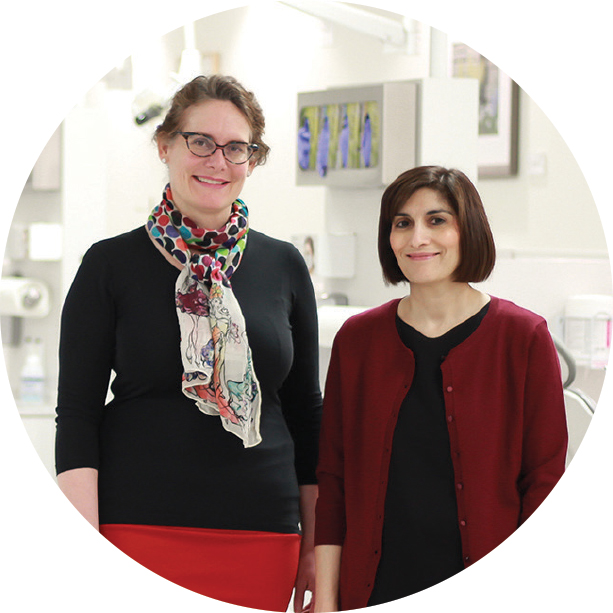
From left, Alexandra Sheppard and Seema Ganatra
"Oral cancer screening should be taking place on patients as part of regular dental visits," said Seema Ganatra, an oral pathologist at the University of Alberta. "Unfortunately, it's not clear how often this is being done by dentists and dental hygienists."
Ganatra explained a soft-tissue examination of the head and neck area-an effective way to spot precancers or cancerous growths, either visually in the mouth or physically under the skin in the neck and throat area-can be conducted by dentists and dental hygienists within as little as two minutes. If a lesion or lump is found, and persists after two weeks, the dentist should refer the patient to an oral pathologist or oral surgeon for further evaluation and treatment.
"Our scope of practice includes conducting a head-and-neck exam along the muscle groups and lymph nodes under the chin and around the neck, and an intra-oral assessment of the tongue, particularly the lateral borders and undersurface, and a visual assessment of the oropharynx," said Alexandra Sheppard, assistant director of dental hygiene clinical education at the U of A.
A screening also entails questions about alcohol and tobacco use, as well as asking patients about sexual practices, partners or vaccinations.
"We teach dental hygiene students how to conduct screenings for atypical and abnormal findings which might be oral cancer," said Sheppard, adding that dental hygienists often see patients on a three to 12 month interval and the lying down position of the patient with the use of lights and loupes helps with visibility. Individuals with atypical oral findings can then be referred to dental specialists including oral pathologists, oral surgeons or their physician.
"That's why it's a good idea to ask for a screening at your next dental visit if it's not offered," Sheppard added.